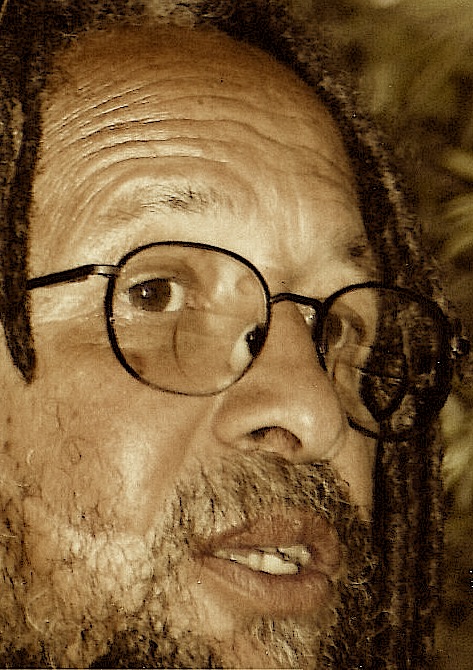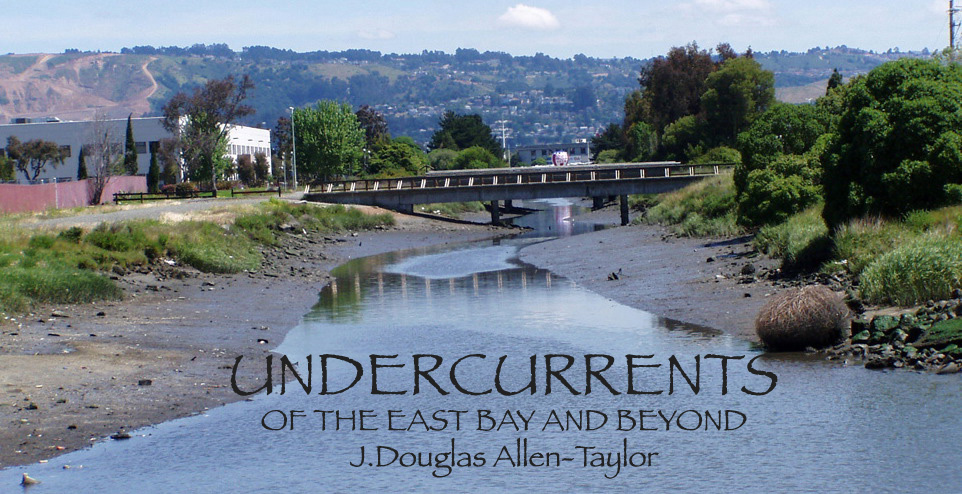|
|
THE IMPORTANCE OF UNDERSTANDING CONTEXT
September 3 , 2009
Our British friends have an old children’s riddle that illustrates the importance of context in the understanding of things.
A man went off to Devonshire
Attending at the feast
Tell me how he traveled there
West or south, north or east?
The riddle cannot be answered, of course, unless you know the location which the man traveled from. Context, as I said, is everything, something we might learn from our British friends. Or, at the very least, from their children.
I was in my mid-20’s when this idea really hit home to me. I was reading historian C.L.R. James’ “The Black Jacobins,” his tremendously-important study of the Haitian Revolution. In his preface to the first edition, James wrote that “in 1789, the French West Indian colony of San Domingo supplied two-thirds of the overseas trade of France and was the greatest individual market of the economic life of the age, the greatest colony in the world, the pride of France. … In August, 1791 … the slaves revolted. … The slaves defeated in turn the local whites and the soldiers of the French monarchy, a Spanish invasion, a British expedition of some 60,000 men, and a French expedition of similar size under Bonaparte’s brother-in-law. The defeat of Bonaparte’s expedition in 1803 resulted in the establishment of the Negro state of Haiti which has lasted to this day.”
It was some years later—perhaps in doing some study surrounding the context of my family history, some of whom came from and through Louisiana—that I revisited an old event that I had studied in American history in both junior high and high school: Thomas Jefferson’s purchase of the Louisiana Territory from Napoleon Bonaparte.
I’m not sure when I connected the two events—the defeat of Bonaparte’s Haitian expedition and the Louisiana Purchase—but I know the triggering mechanism. Both occurred in 1803. I remember the common dates, and the connection, hitting me much like Colonel Kurz describing his revelation in “Apocalypse Now,” like a diamond hitting me in the forehead, the idea that San Domingo was the crown jewel of French colonies in the New World—the money maker—and when San Domingo fell to the revolution of its captive Africans, France could not support the rest of its holdings in the Americas—militarily and financially—and so Bonaparte sold them to the United States.
That the conclusion—logical and self-evident—is now drawn in the Wikipedia biography of Napoleon I: “Following a slave revolt,” the online encyclopedia notes, Bonaparte “sent an army to reconquer Saint-Domingue and establish a base. The force was, however, destroyed by yellow fever and fierce resistance led by Haitian generals Toussaint Louverture and Jean-Jaques Dessalines. Faced by imminent war against Britain and bankruptcy, [Bonaparte] recognised French possessions on the mainland of North America would be indefensible and sold them to the United States—the Louisiana Purchase—for less than three cents per acre...”
What is most striking about all of this is that the Haitian Revolution was never mentioned by any of my junior high or high school teachers while discussing the Louisiana Purchase; in fact, I cannot remember hearing about the Haitian Revolution from those teachers, at all.
But how can one understand the one historical event without understanding the other, regardless of which way you begin the equation?
One can easily blame this “oversight” on the fact that the Haitian Revolution was conducted by African descendants and people bound in slavery—America’s tunnel vision on all things race are legendary, after all—but I believe that there was another driving force at work here. American history and civics classes, at least at the public school level, tend to list towards the myopic, emphasizing the memorization of a collection of pre-fabricated facts, rather than on the understanding of the phenomena themselves. That trend has been exacerbated to the nth degree by the brave new information world of cable television and the internet, where a there is so much glut of information thrown at us every day, the flood of it can only be managed in small chunks, one chunk largely consumed in complete isolation of all the others, standing contradictory and unsupported, the conclusions drawn all out of any reasonable context, with long-lasting and detrimental effects on our current political debates.
This often comes into play when commentators try to explain the current by reference to a famous incident or epoch of the past, a practice that sometimes leads to misunderstanding of both.
That seems to be the case in an otherwise excellent—and I stress the “otherwise excellent”—August 20, 2009 Daily Planet commentary by Jean Damu equating the potential physical threats to the life of President Barack Obama to the same threats to President Abraham Lincoln (“From the Occupied Territory: Awaiting the Assassination”).
In his commentary, Mr. Damu describes the famous scene on the White House balcony in April of 1864 in the last days of the Civil War when, following Mr. Lincoln’s triumphant tour of fallen, the President announced to the assembled jubilant crowds his intention to urge Congress to grant citizenship to African-Americans. Mr. Damu notes that Elizabeth Kleckley—Mrs. Mary Lincoln’s African-American seamstress and confidante, “told Mrs. Lincoln she must try never to allow such a scene to happen again. ‘Anyone could have taken a shot at him,’ she said.”
According to Mr. Damu, Mrs. Lincoln responded that she “had premonitions” about something terrible happening to Mr. Lincoln, with Mr. Damu going on to conclude that “Many are having Mrs. Lincoln-like premonitions these days. Recently we have been informed that President Obama has received more death threats in a shorter period of time than any president since the organizing of the Secret Service in the immediate aftermath of the Lincoln assassination.”
While this comparison between Mr. Lincoln and Mr. Obama may seem compelling, it is historically inaccurate. Mr. Lincoln faced far more than threats against his life. He came into office following the secession of several Southern states and the formation of the Confederacy, in a national capitol that was surrounded by slaveholding territories (Maryland and Virginia). Told that there was a plan for Confederate-sympathizing mobs to abduct him from his train and do him harm—perhaps even kill him—as he was passing through Baltimore on his way to Washington to be inaugurated into office, Mr. Lincoln was forced to take an earlier train and sneak into the capitol in disguise (the talk of the Baltimore mob was no idle threat; weeks later, similar mobs attacked federal troops on their way through the city to D.C.).
There are two recorded attempts on Mr. Lincoln’s life when he was shot at while (and both times had his hat shot from his head) he was riding alone, on horseback, from the White House to the Old Soldier’s Home in D.C.’s northern suburbs, where he and his family stayed during the summer to escape Washington’s swampy, feverish conditions. There may have been more attempts that went unrecorded, as Mr. Lincoln kept such things quiet in order to keep from alarming his excitable wife.
Mr. Lincoln’s eventual assassin, John Wilkes Booth, is reported to have speeded up his assassination plans because he was convinced of a second, serious plot to kill Mr. Lincoln in the wake of General Lee’s surrender at Appomattox, and Mr. Booth was determined to put himself in the history books by getting to Mr. Lincoln first.
This is not meant to minimize the potential threats to the life of Mr. Obama, which Mr. Damu outlines very well in the bulk of his article. It is only to say that in equating what we can currently see in the threats to Mr. Obama to those which Mr. Lincoln faced, we minimize the threats and physical acts against Mr. Lincoln, and muddle both the past and the present. The threats to Mr. Obama need no equivalent in history to be understood. In fact, there is no precedent in history, as America has never had a president who was other than self-declared full-blooded white.
We see a more detrimental false equivalency—practiced on both the left and the right—in the use of modern times’ most favored comparative figure, Adolph Hitler. Many of our friends on the left were fond of equating the policies of President George W. Bush to those of Mr. Hitler—many of our friends on the right are doing the same with Mr. Obama. Both equivalencies go beyond the ridiculous. The sum total of either the alleged or actual wrongs committed by both Mr. Bush the Younger and Mr. Obama combined can in no way, and never, be equated with the single most heinous action of the Hitler chancellory—the attempt to exterminate Europe’s Jewish population. The Hitlerization of Mr. Bush and Mr. Obama won’t stick, and the most likely result will be the eventual belief by the younger members of America’s population that the worst Mr. Hitler did was torture prisoners and attempt to socialize health care.
The muddling of past and present in current political discourse is, perhaps, most prominently on display by our friends on the right in their attempts to discern—and thereafter disseminate—the views of America’s Founding Fathers on the proper place of religion in American life.
The problem with this procedure is that it attempts to apply 18th century arguments and opinions by American revolutionary activists and thinkers to modern American conditions, while making no attempt to understand the conditions that these 18th century revolutionaries were trying to guard against.
Every American thinker of the 18th century was keenly aware of the history of the Spanish Inquisition, a 300 year era beginning in the late 15th century in which the Church—in direct alliance with the Spanish crown and the Holy Roman Empire—tortured and murdered thousands because of allegations that they differed with official Church doctrine.
Much closer to the minds and experiences of the 18th century American colonists, England went through a period close to religion-state careening chaos in the 16th century when King Henry VIII broke from the Catholic Church and established the Church of England. Henry’s successor—the young King Edward VI—persecuted English Catholics and moved England towards Protestantism during his brief reign. At Edward’s death his sister, Queen Mary, re-established Catholicism as the official English religion, attempted to bring the English Church back under the authority of Rome, and persecuted Protestants. When Mary’s younger sister, Elizabeth I, replaced Mary on the throne, she brought England back into the Protestant camp in which the country now firmly lies.
This mixture of religion and state was accompanied in England by the jailing of priests and ministers and the burnings of so-called “heretics”, the targets of the term rotating on its axis depending on which religion was in power, and which was out. This religious warfare and persecution is what many of the colonists moved to the Americas to escape, and what was uppermost in mind in the revolutionary American theorists when they worked out the clause in the American governmental system to separate church and state.
Amazingly, that British religious-state history is not studied in most American public schools, if at all, and, thus, the ignorance in our discussion on what the Founding Fathers might have meant.
If we do not understand context, we understand nothing at all. That is what is most missing in our modern political discussions, in all of our hurry to make our various points.
|

